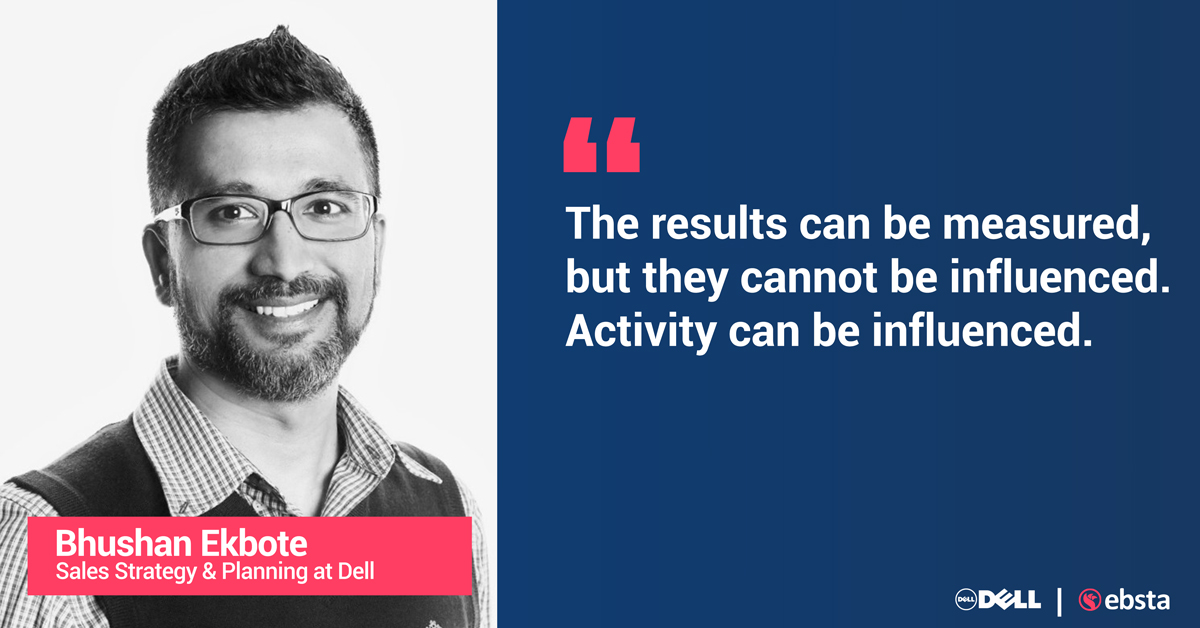Table of Contents
Share this article
Learn from the brightest minds how to predictably and efficiently grow revenue.
Related Content
Lessons in Scaling Cybersecurity Sales with Dean Hickman-Smith
This week on the Revenue Insights Podcast, Guy Rubin, CEO of Ebsta, speaks with Dean Hickman-Smith, Chief Revenue Officer at HackerOne on Scaling Cybersecurity Sales. In this episode, Guy and Dean explore the evolution of sales leadership, the power of community in B2B sales, and how AI is transforming sales enablement and performance. Dean Hickman-Smith…
Building High-Converting Teams with Sean Murray of LeadIQ
This week on the Revenue Insights Podcast, Graham Smith speaks with Sean Murray, Senior Director of Sales and Sales Development at LeadIQ. In this episode, Sean shares his journey to tech sales, discusses his approach to building high-performing SDR teams, and explains why quality outreach trumps quantity in today’s sales landscape Sean Murray is Senior…
Transforming Productivity Metrics with Mike Perrone, Chief Operations Officer at Prodoscore
This week on the Revenue Insights Podcast, Guy Rubin, founder and CEO of Ebsta, speaks with Mike Perrone, Chief Operations Officer at Prodoscore. In this episode, Guy and Mike discuss data-driven productivity scores, bridging employee flexibility with executive accountability, and how to empower sales teams through actionable insights and tailored coaching. Mike Perrone is Chief…
Sales Strategy & Planning: Bhushan Ekbote of Dell
Bhushan Ekbote jumped onto Sales Operations Demystified to share his knowledge and experience in Sales Operations. Check out all the other episodes of Sales Operations Demystified here.
You can learn more about:
Table of Contents
Tools
- Marketo
- Full Circle Insights
- LeanData
- ZoomInfo
- dun & bradstreet
- DiscoverOrg
- Callidus Cloud
- Salesforce CPQ
- Exactly
- Hoopla
- Sales.com
Key Takeaways
An interesting Journey to the Demand Side of the Business
Bhushan’s entry into sales operations was more an accident than an informed decision. Whilst working at Seagate, he got introduced to the demand side of the business and the mechanical engineer in him was quickly fascinated by forecasting cycles, processes, and the models in which they are built. Luckily, he got his break into this intriguing side of the business when Seagate was establishing its cloud division.
Here, he started off with demand planning and building models, and within his six and a half years he developed great experience in different segments of sales operations. His interest pushed him to venture deeper into the field, allowing him to enhance his portfolio as he gained more knowledge.
The factor that attracted Bhushan most to sales operations was the dynamism of the department. It was exciting for him that even though you might know about your product, the macroeconomic changes that come with it can quickly change the dynamics of the market. Hence, there is no boring day as new challenges emerge on a daily basis.
Experience of working at Dell’s vs. smaller organizations
The culture at Dell is not something that you would expect from such a big organization; it is comparatively more dynamic and agile. Bhushan explained that Dell believes in ‘theory of abundance’, i.e. the market is “always bigger” and there is always a room to make the pie bigger and that you don’t have to just take market share from competitors. At Dell, they work on how to improve the less successful departments to improve overall performance.
Bhushan now works from the strategic side of sales operations, more focused on the best use of resources while managing a big pool of 30,000 sales representatives, in smaller organizations he would be more tactical. We have seen this time and time again with guests… if you want to be strategic: move to a big company and if you want to be “hands on” then join a startup.
#1 sales metric – daily activity
For Bhushan, a metric that actually influences performance simply cannot be based upon the results or the pipeline structure. Pipeline is not something that can be worked upon directly, rather the activities that build up the pipeline need to be optimised to influence revenue.
He feels that the track of daily activities is the number one metric to measure in order to influence performance, which understandably will vary from one organization to another. For a smaller organization, trackable activities might just be daily emails or phone calls, but for the enterprise organizations, this may refer to the number of people attached to an opportunity. Hence, the daily activities for judging the performance may vary across different types of organizations.
Bhushan’s Biggest Influence
Bhushan usually considers the sales representatives as a major source of influence for any business, closely observing them can easily indicate the business’s probability of success. Outside of a sales reps, of his major inspiration came from:
- Sid Nakappan – Chief Customer & Revenue Officer at International Institute of Analytics
- Chris Semain – Business Development Specialist at Allen Lund Company
- Chris Dent – Consultant
- Olivier Rubel – Associate Professor of Marketing at UC Davis
Subscribe To Sales Ops Demystified
Quote




